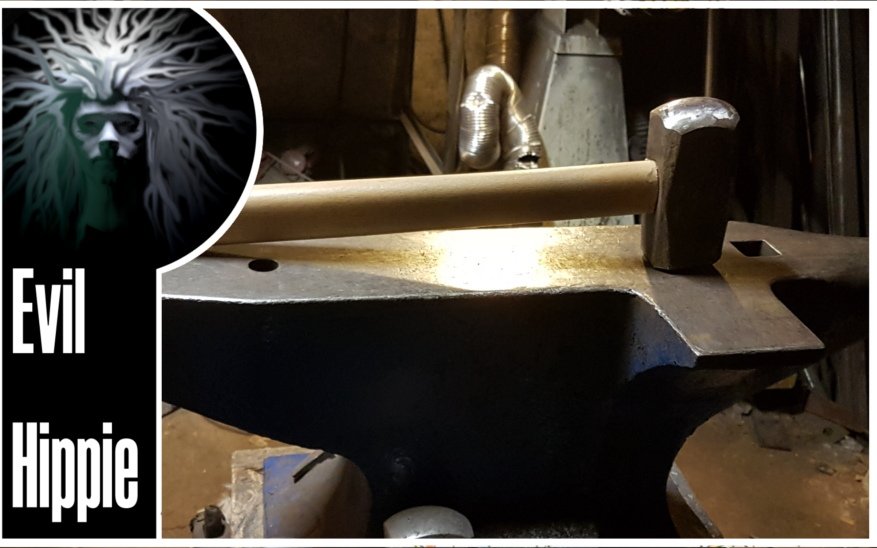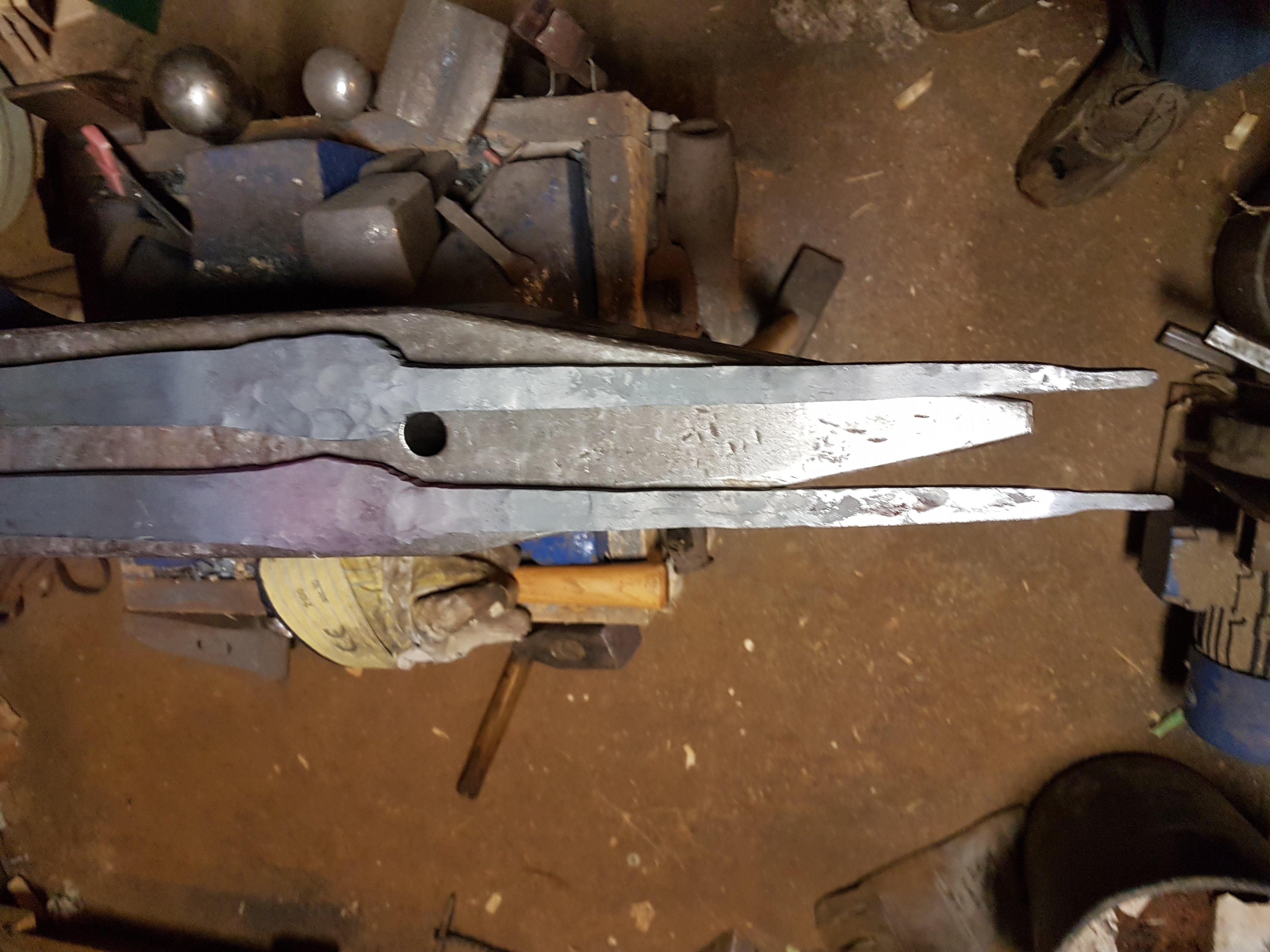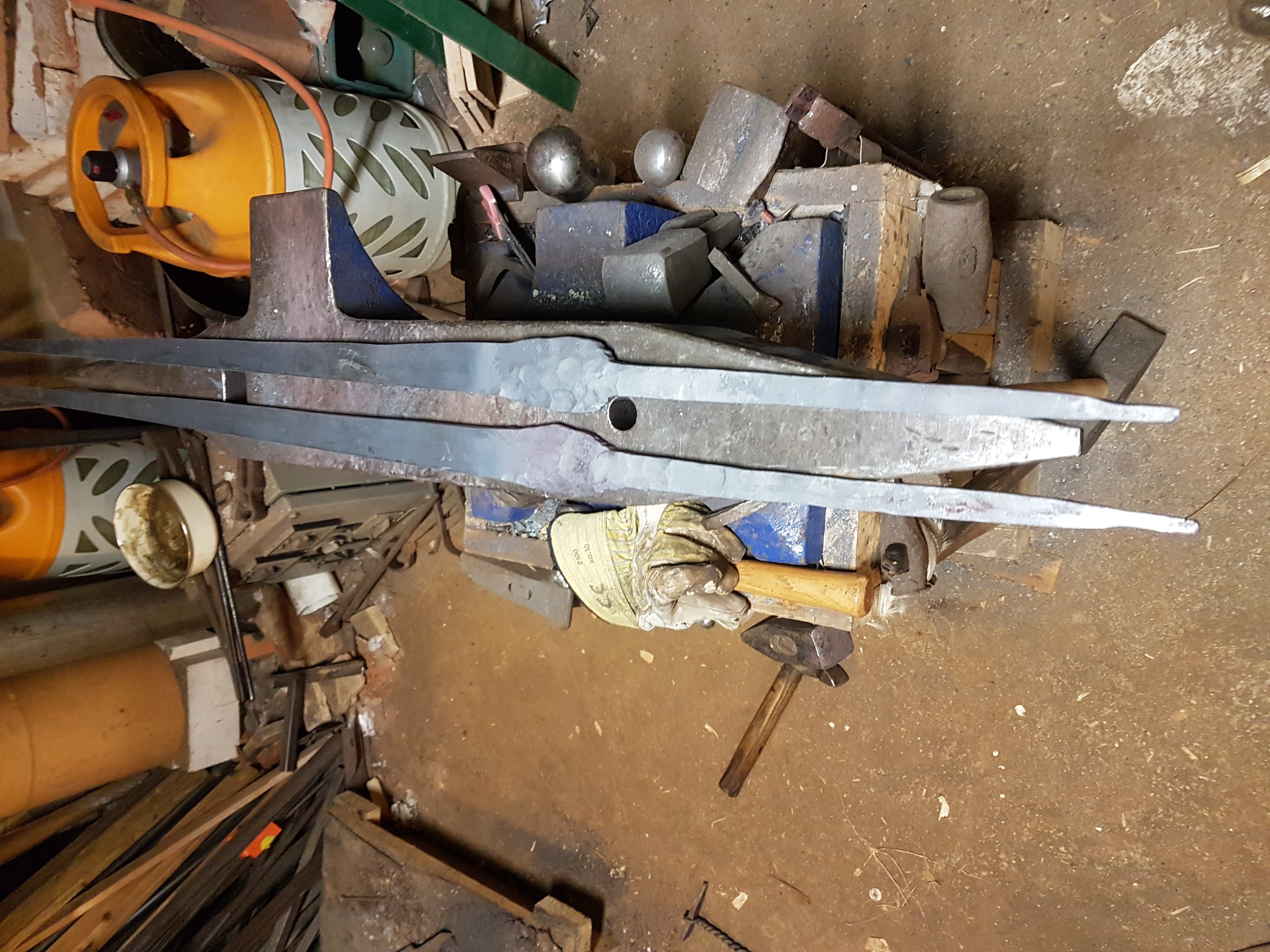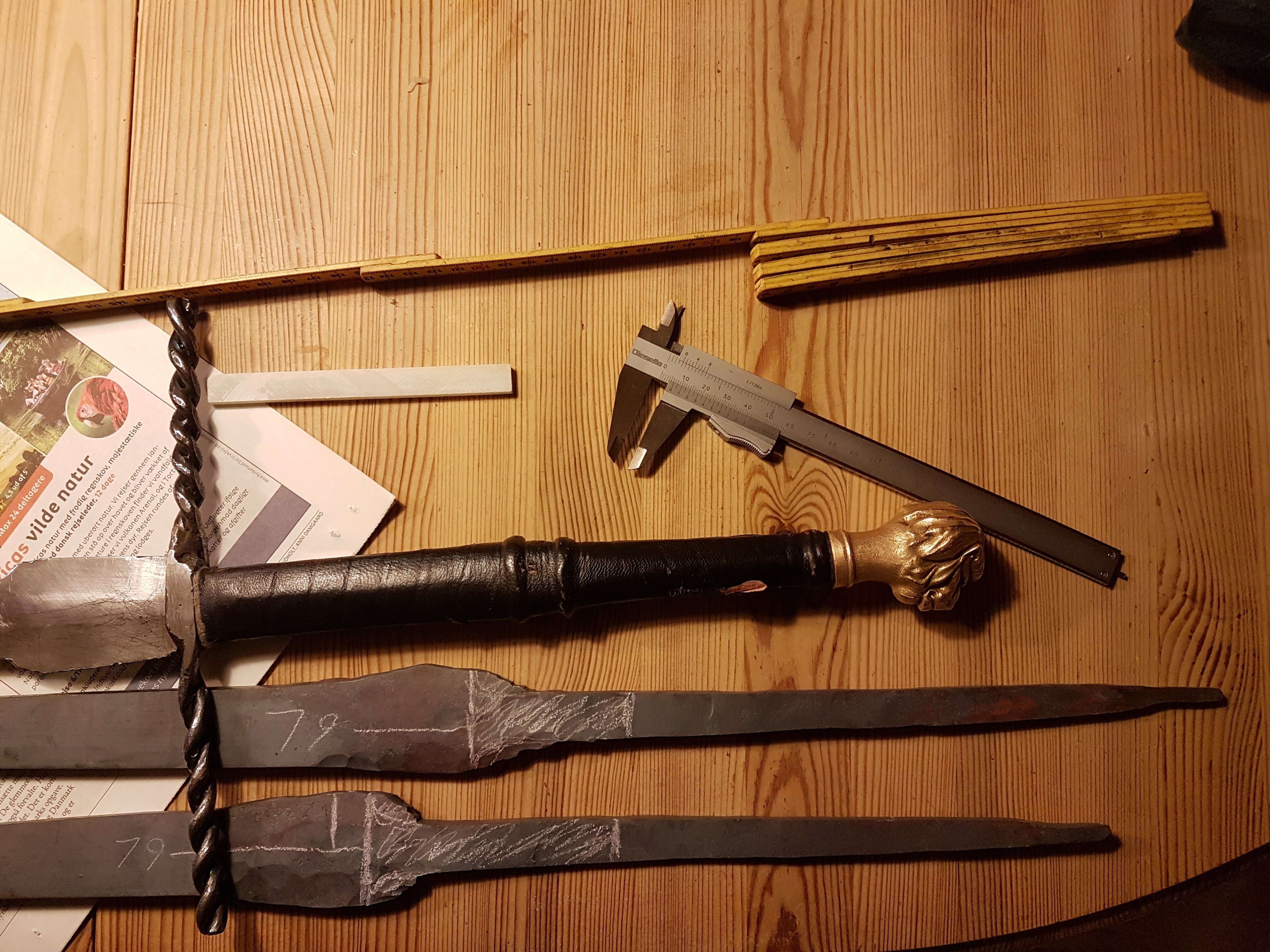Swordmaking is not only complicated, it is also time consuming and fraught with risks, both in the sense that you may harm yourself during the process, but also because a small error at a critical point in the process will probably destroy your work.

So to make swords you will have to be both patient, careful, skilled at every part of the process , and knowledgeable about the tools and materials that you work with.
So Lets start with the beginning: The forging. Today Steel is readily available and fairly cheap, in fact the cheapest part of making a sword is usually the steel for the blade. I use a water-hardening spring-steel. very similar to what is used in car springs (although that will usually be oil-hardening)
I start by choosing a usable bar of steel. Since a sword will be pointed in one end I often make a triangular bar to begin with. I choose a bar that is a little wider than I need and then i cut it into to triangles. like this

this gives me 2 usable bars, which is nice because then, one can heat up in the forge while I work on the other one.
The amount of steel I need to use is something I have had to learn along the way, and this is where my HEMA training comes in handy. A longsword weighs approximately 1.5 kg and app. 1 kg is the blade. The rest is quillons, pommel and handle
thus I choose a bar of around 3 kgs so that each of the triangular bars will be 1.5 kgs. this gives me enough material so that when I grind the blade there will be 1 kg material left.

I start by drawing out the tang (the part that goes inside the handle) from the thick end. This part takes a lot of work and I use the largest possible hammer and put a lot of force in each blow. This always leaves me literally panting, and soaked in sweat.

The dimensions of the tang needs to be fairly accurate. I usually go for a length around 300 mm , a width that tapers from 15 mm to 10 mm and a height of 6 mm. this is durable enough to hold up to vigorous use and at the same time slim enough that I can fit an aesthetically pleasing handle on it.

At this point there is no difference whether I make a real, sharp sword or a blunt training weapon. the dimensions of the handle are the same and the blade is also very similar so far. I begin to draw out the width of the blade as well as drawing it further out in length.
Real swords have what is called distal taper, that means that the blade gets slimmer in both dimensions as you get closer to the tip. This ensures both a point of balance which is closer to the hand, making the blade easier and faster to maneuver, and give a more acute point which will penetrate your opponent easier.

I don't make swords for killing people(seriously, of course I dont!) but even for a training sword it makes sense to have distal taper. First, it handles like a real sword, but equally important, the thinner blade will flex more (like a spring) which paradoxically makes it more safe, because more of the force is absorbed by the flex of the blade.
I use a combination of hammering and using a small hand-cranked roller. The roller gives really good control over the thickness but only moves material in the length-direction. The hammer is more versatile but less exact.

As you can see there are two different profiles to the blades. One is what is called a feder (german for feather) .It is the one that is very thin all the way down and then has a broad section just at the base of the blade, it is used only in training, the idea is that you get the exact same handling characteristics as a sharp sword, but without the danger. The other is the normal profile and it can be made either blunt (and thus usable for training, but not for full contact sparring) or sharp in which case it will have to hang on the wall until the zombie apocalypse, or can be used for cutting practice.
This time around I am making two training swords (because we are always a few swords short at training) one is to become a feder the other a blunt. I have photographed them together with my current feder, which is pretty beat up after almost a year of use.
I hope you like them.

Im EvilHippie, a compulsive creative and jack o' trades. If you want to know more about me, check out my introduction post here
If you like what you see, feel free to upvote, follow and resteem
or you can check out these recent posts
a drawing
the straightening of the blade
girl in a forest
a Pegasus
alt-Hanna
